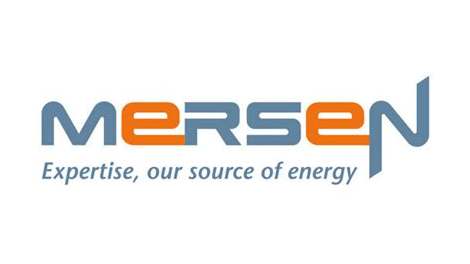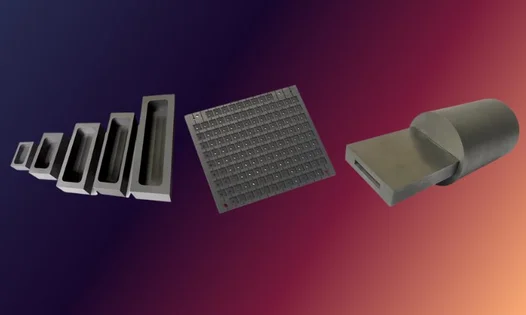Mersen – Mersen to acquire Bar-Lo to consolidate its material strategy in the US
- The acquisition will secure and reinforce our position in the United States
- The business will contribute c. 15 million USD in annual sales to Mersen
- The transaction will be accretive to net income as of year one
Paris, October 29th, 2024 – Mersen, a global expert in electrical power and advanced materials, announces today the acquisition of Bar-Lo Carbon Products, Inc., a US precision machiner of graphite and ceramics since 1965.
This new acquisition reinforces Mersen’s leading position in synthetic graphite in the United States, with direct access to new customers in the semiconductor market as well as other process industries. It will also enable the Group to leverage synergies, both upstream and downstream of the value chain.
A family-owned company, Bar-Lo employs approximately 30 employees at its facility in Fairfield, NJ (US). The business will contribute c. 15 million USD in annual sales to Mersen and the acquisition represents an outflow of c. 20 million USD, of which 80% at the closing of the acquisition. This amount includes an estimated earn-out to be paid in 2026. Given the company’s high profitability, the transaction will be accretive to net income as of year one. It will be consolidated as of November 1st in Mersen’s accounts.
Luc Themelin
Chief Executive Officer of Mersen
Bar-Lo has been a Mersen customer for many years and I’m delighted to welcome the team to the Group. Bar-Lo has recorded an impressive track record in the recent years, and Mersen will benefit from expertise of its teams and their ability to build strong relationships with customers.
SourceMersen
EMR Analysis
More information on Mersen: See the full profile on EMR Executive Services
More information on Luc Themelin (Chief Executive Officer, Mersen): See the full profile on EMR Executive Services
More information on Thomas Baumgartner (Chief Financial Officer, Mersen): See the full profile on EMR Executive Services
More information on Bar-Lo Carbon Products, Inc. by Mersen: http://www.barlocarbon.com/ + US precision machiner of graphite and ceramics since 1965.
A family-owned company, Bar-Lo employs approximately 30 employees at its facility in Fairfield, NJ (US). The business will contribute c. 15 million USD in annual sales to Mersen.
More information on Barry M. Flowers (Chief Executive Officer, Bar-Lo Carbon Products, Inc., Mersen): N.A.
.
EMR Additional Notes:
- Graphene – Graphite:
- Graphene is a one-atom-thick layer of carbon atoms arranged in a hexagonal lattice. It is the building-block of Graphite (which is used, among others things, in pencil tips), but graphene is a remarkable substance on its own – with a multitude of astonishing properties which repeatedly earn it the title of “Wonder material”€.
- Graphene is the thinnest material known to man at one atom thick, and also incredibly strong – about 200 times stronger than steel. On top of that, graphene is an excellent conductor of heat and electricity and has interesting light absorption abilities. It is truly a material that could change the world, with unlimited potential for integration in almost any industry.
- Graphite is composed of multiple layers of graphene.
- Isostatic Graphite:
- Isostatic graphite is an ultra-fine grain graphite used for applications where the mechanical properties of other fine grain graphites are inadequate. The term “isostatic graphite” stands for isostatically molded graphite.
- In contrast to isostatic graphite, extruded graphite has a coarser grain size and a lower strength but higher thermal and electrical conductivity. Vibration molded graphite is characterized by a homogeneous structure and typically a medium grain size.
- Extruded Graphite:
- In contrast to isostatic graphite, extruded graphite has a coarser grain size and a lower strength but higher thermal and electrical conductivity.
- Semiconductor:
- Solid substance that has a conductivity between that of an insulator and that of most metals, either due to the addition of an impurity or because of temperature effects. Devices made of semiconductors, notably silicon, are essential components of most electronic circuits. Some examples of semiconductors are silicon, germanium, gallium arsenide, and elements near the so-called “metalloid staircase” on the periodic table. … Silicon is a critical element for fabricating most electronic circuits.
- SiC Semi-Conductor Technology:
- Silicon carbide (SiC), a semiconductor compound consisting of silicon (Si) and carbon (C), belongs to the wide bandgap (WBG) family of materials. Its physical bond is very strong, giving the semiconductor a high mechanical, chemical and thermal stability.
- Silicon carbide, exceedingly hard, synthetically produced crystalline compound of silicon and carbon. Its chemical formula is SiC. Since the late 19th century silicon carbide has been an important material for sandpapers, grinding wheels, and cutting tools.
- Since there is less energy to dissipate, an SiC device can switch at higher frequencies and improve efficiency. The higher efficiency, smaller size and lower weight of SiC can create a higher-rated solution or a smaller design with reduced cooling requirements.


